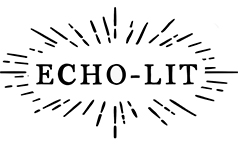Posted by Sarah Stevenson on 9th Sep 2019
3 Questions to Ask for Banned Books Week September 22-28 2019
All you need to know about banned books and more, this blog post will cover the history of book banning and where we are today.
Banned Books Week is a coalition calling for change every year for one week regarding banned and challenged books. This year's theme for the week is "Censorship Leaves Us in the Dark," urging readers to "Keep the Light On." While we celebrate the world's challenged books, we should consider the history of such practices and the fight for progress.

Image by Free-Photos from Pixabay
When did Banned Books become a thing?
Books have been banned for as long as books have been around. From the political to the religious to the obscene, leaders, scholars, and even entire nations have banned books through censorship, book burnings, and more. In a modern American context, the 1980s brought about a lengthy list of challenged books, and a number of organizations created this week to fight for literary freedom. The American Library Association (ALA) releases data on the most banned books each year, and they promote reporting instances of censorship.

Image: ALA

Image by Marisa Sias from Pixabay
Is it even legal to ban books?
In America, legal precedent takes priority in cases concerning book banning. In 1982, the hallmark case Board of Education, Island Trees School District v. Pico said that public libraries could not ban books because they disagreed with the material rather only if the material was deemed "pervasively vulgar." However, other cases have shorted the rights of student journalists and clarified the difference between adult and public school students (Hazelwood School District v. Kuhlmeier, 1988). The latter contradicts freedom of speech and expression, but the former encourage libraries not to overstep the boundaries of censorship. Miller v. California has created a three point system for banning obscene material and consequently opened up the United States to many titles previously banned. Today, schools and libraries are still being challenged with the books they put on their shelves.

What kinds of books are banned or challenged?
The past few years have brought fervent attacks and challenges towards texts about LGBTQ+ people (mostly of the young adult genre), substance abuse, race, religion (minority religions), witchcraft, and age appropriateness. On the surface, it is obvious that a lot of the topics considered taboo to book banners fall into minority categories. Literature by political extremist groups supporting racism and violence have also been banned. Political books on communism, anarchism, and more have been banned as well. Whatever the reason, why we censor books is often a reflection of our culture. America has a long history of puritanical sexual oppression, blatant homophobia, political narrowness and racism that we can see to this day.
We hope this blog post encourages you to read banned books and celebrate freedom of speech during Banned Books Week. The fights is ongoing, and it takes readers like you to make a change. GO BOOKS!

